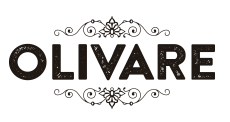They examine the assets, liabilities, and equity to determine if the company can repay its debts and meet its financial obligations. A strong Statement of Financial Position with good liquidity and a solid asset base gives lenders confidence in extending credit. The balance sheet is one of the three core financial statements that publicly traded companies release each quarter. The balance sheet equation is key to bookkeeping, giving a clear view of a company’s finances. It’s backed by the Financial Accounting Standards Board, making sure U.S. corporate finance reports are consistent. By matching assets with liabilities and equity, companies can see their financial health clearly.
What is DSCR?
The balance of return earnings could be reduced once the entity makes dividend payments to its shareholders or reinvestment. There are many sub-components that are recorded under shareholders’ equity. These include Common Stock, Prefer Stock, Retained Earnings, and Accumulated Other Comprehensive Incomes. For a private company, we usually called owner equity, and for a corporation, we usually call it shareholders or stockholder equity. Report the balance of cash and cash equivalence that is to the entity at the reporting date. It could be cash on hand, petty cash, cash deposit in the bank, or other financial note that are equivalent to cash.
The Critical 8 Steps of the Accounting Cycle
This has led to a rise in average global temperature and ocean acidification. The increase in atmospheric concentrations of CO2 causes a range of further effects of climate change on the environment and human living conditions. Adaptation to increased concentrations of CO2 occurs in humans, including modified breathing and kidney bicarbonate production, in order to balance the effects of blood acidification (acidosis).
- Changes in ocean chemistry can have extensive direct and indirect effects on organisms and their habitats.
- When placed in the mouth, it dissolves (just like other hard candy) and releases the gas bubbles with an audible pop.
- The current and quick ratios can be used for liquidity and solvency tests.
- The image below is an example of a comparative balance sheet of Apple, Inc.
- Current assets are assets that a company can easily convert into cash within a financial year.
These are things the company owns that can easily be sold for cash or will be used within one year. If you are analyzing a stock, then the balance sheet typically shows more than one time period. For example, it may show the breakdown for two or three consecutive years, so investors can see how the numbers evolved over time. But it’s important to be aware of changes and trends to see how a company is doing, so it helps to look at several balance sheets for different time points.
Shareholders’ Equity: Ownership and Retained Earnings
Non-current assets are long-term investments that take time to turn into cash. They are things like buildings, machines, and special rights like patents. Big companies in the U.S. often have a lot of these assets, which add to their value. The current ratio is calculated by dividing the total current assets by the total current liabilities. A balance sheet can be used to calculate several financial ratios.
C. Understanding Industry Benchmarks
Owner’s equity what is the balance sheet formula is equal to total assets minus total liabilities. In other words, it is the amount that can be handed over to shareholders after the debts have been paid and the assets have been liquidated. Equity is one of the most common ways to represent the net value of the company.
She founded Business Accounting Basics, where she provides free advice and resources to small businesses. Below is a typical balance sheet example; each link provides further details and how to account for them. Asset accounts will be noted in descending order of maturity, while liabilities will be arranged in ascending order.
Depending on the company, different parties may be responsible for preparing the balance sheet. For small, privately held businesses, the balance sheet might be prepared by the owner or by a company bookkeeper. For mid-sized private firms, they might be prepared internally and then reviewed by an external accountant.
Getting a syndicated loan: What you need to know
- If you want to see more examples of balance sheets, look at the Companies House website.
- Because the value of liabilities is constant, all changes to assets must be reflected with a change in equity.
- The net profit margin ratio indicates the ratio of sales that is left after expenses are paid.
- The financial statements are automatically created from the general ledger, using standalone accounting software or ERP systems.
It is worth looking into if you are not already using software, as it can save time and money. Some learners may also qualify for scholarships or financial aid, which will be credited against the program fee once eligibility is determined. Please refer to the Payment & Financial Aid page for more information. All programs require the completion of a brief online enrollment form before payment. If you are new to HBS Online, you will be required to set up an account before enrolling in the program of your choice.
What is the difference between current and non-current liabilities?
Carbon dioxide is a chemical compound with the chemical formula CO2. It is made up of molecules that each have one carbon atom covalently double bonded to two oxygen atoms. It is found in a gas state at room temperature and at normally-encountered concentrations it is odorless.
